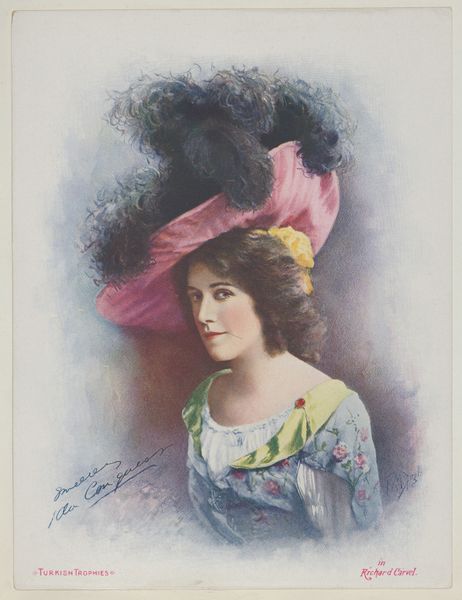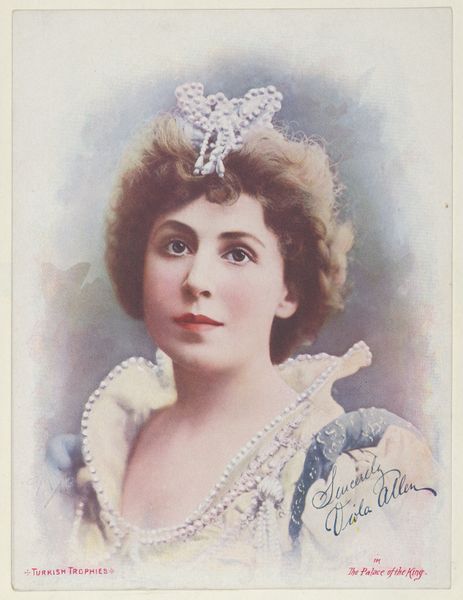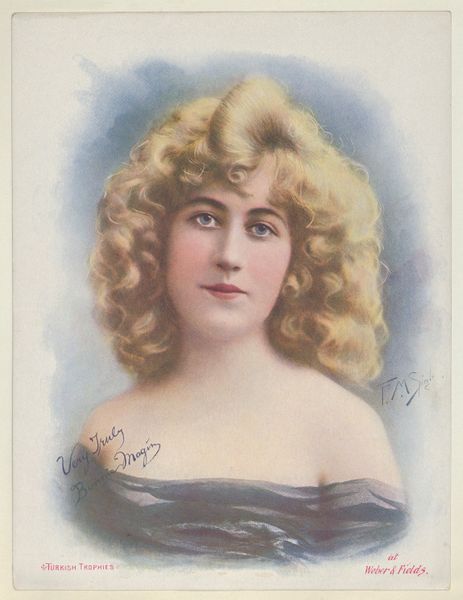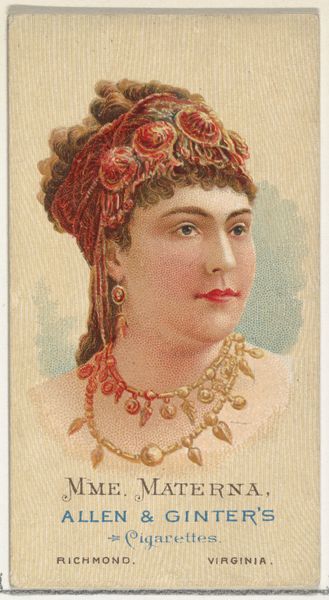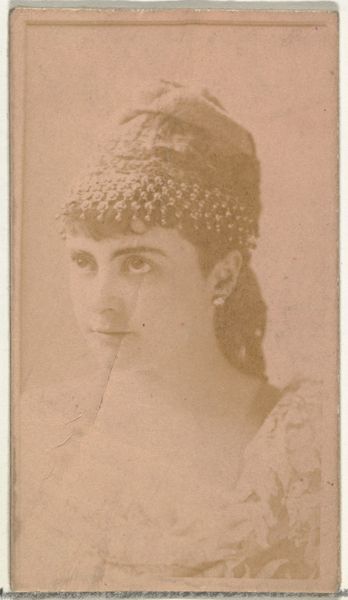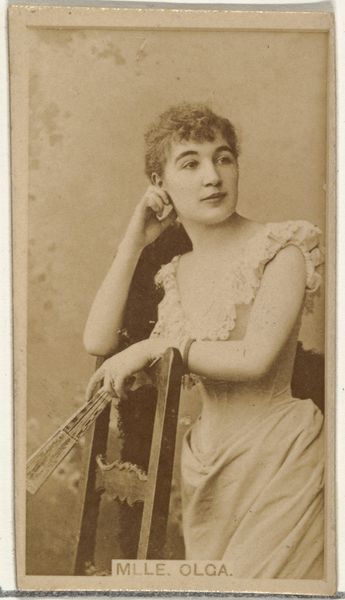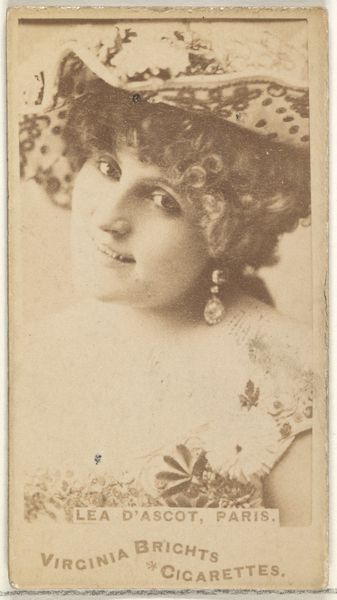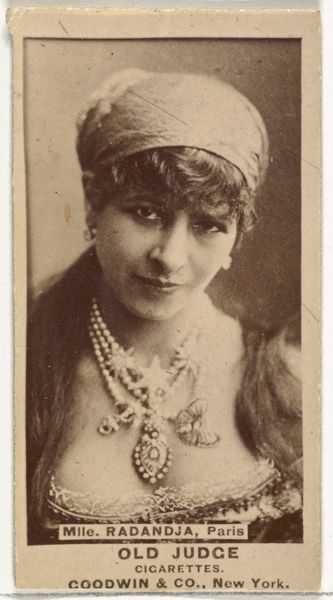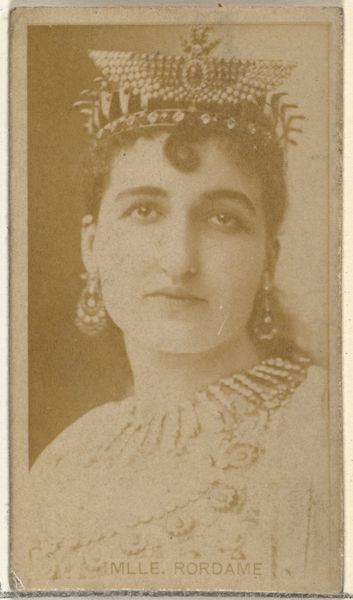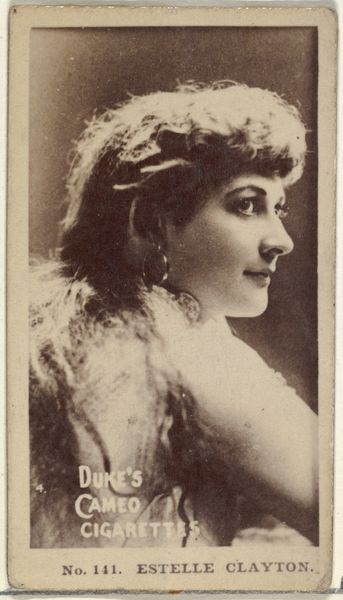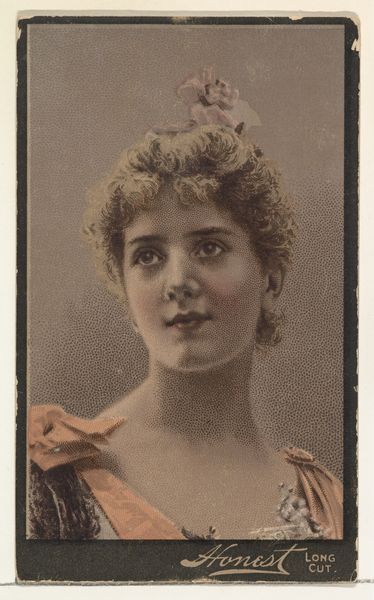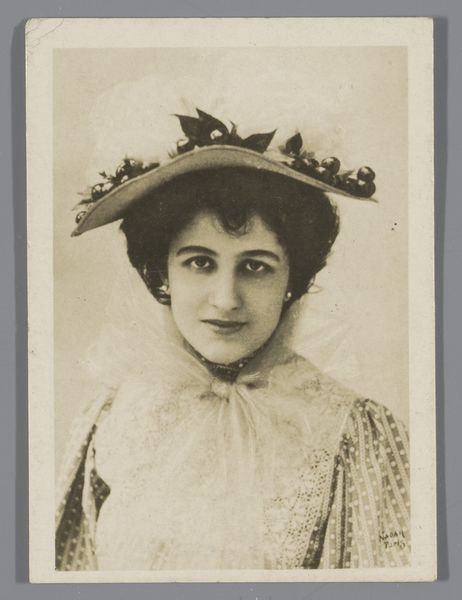
Marie Follette as an Egyptian, from the Actresses series (T1), distributed by the American Tobacco Co. to promote Turkish Trophies Cigarettes 1900
0:00
0:00
#
portrait
# print
#
figuration
#
orientalism
Dimensions: Sheet: 8 1/4 x 6 5/16 in. (21 x 16 cm)
Copyright: Public Domain
Editor: This is Marie Follette as an Egyptian, a 1900 print by Frederick Moladore Spiegle, used to promote Turkish Trophies Cigarettes. The portrait depicts a woman in vaguely Egyptian garb, but something about it feels…off. What do you see in this piece? Curator: It's a fascinating example of early 20th-century Orientalism, a lens through which the West exoticized and often misrepresented Eastern cultures. Here, we see Marie Follette, an actress, embodying a romanticized "Egyptian" figure. The snake, the headdress... these are all signifiers used to construct a particular image for Western consumption, reinforcing power dynamics of the time. Do you think it accurately portrays Egyptian identity? Editor: No, it seems like a collection of stereotypes rather than an accurate portrayal. The snake, especially, feels like a tired trope. Curator: Exactly. And the use of this image to sell cigarettes is crucial. It links this exoticized vision of the "Orient" with luxury and desire. This intersection of advertising, entertainment, and cultural appropriation tells us a lot about the period’s attitudes towards race, gender, and power. How do you think this image would be received today? Editor: I imagine there would be quite a bit of controversy. It feels insensitive and reinforces harmful stereotypes. Curator: Indeed. Analyzing pieces like this allows us to unpack the complex ways in which art, commerce, and cultural perception intersect. It’s a stark reminder of how easily misrepresentation can occur. Editor: I never considered the connection to power dynamics and marketing before. Thanks for shedding light on those deeper cultural implications. Curator: It’s crucial to consider such implications! Engaging with art critically empowers us to challenge and dismantle harmful narratives that persist today.
Comments
No comments
Be the first to comment and join the conversation on the ultimate creative platform.
